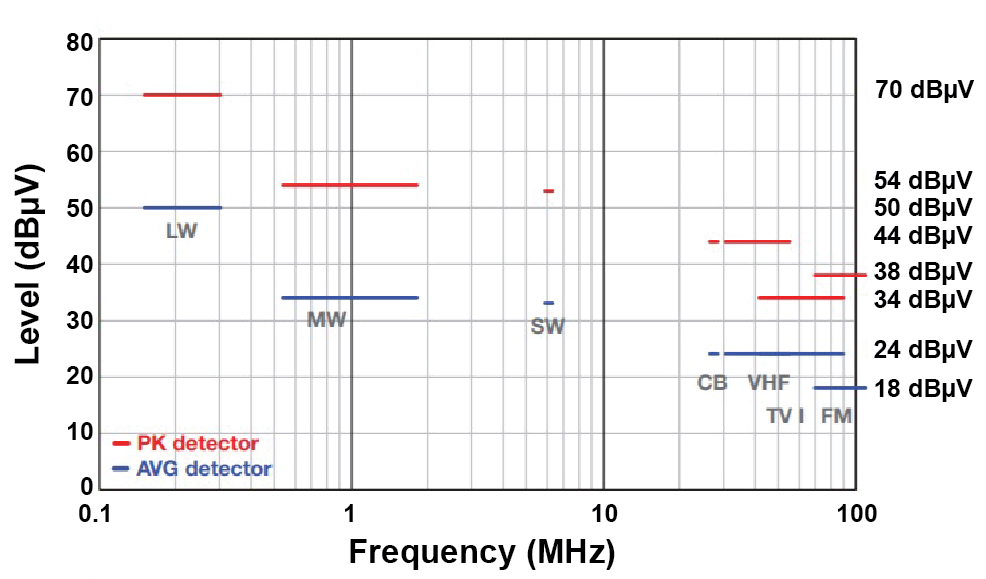SLUP408 February 2022 LM25149-Q1 , LM61460-Q1 , LM61495-Q1 , LMQ61460-Q1
- 1 Introduction
- 2 Defining EMI
- 3 What Causes EMI in a Switched-Mode DC/DC Regulator?
- 4 Existing Passive EMI Filtering Techniques
- 5 Passive Filter Limitations
- 6 AEF
- 7 Spread Spectrum
- 8 DRSS
- 9 True Slew-Rate Control
- 10HotRod™ Package Technology
- 11Optimized Package and Pinout
- 12Integrated Capacitors
- 13Conclusions
- 14References
- 15Important Notice
2 Defining EMI
EMI occurs when electric or magnetic fields couple and interfere between two or more electronic devices or systems. In an electronic system, voltage ripple can result in conducted noise propagating from one circuit to another, especially when there are shared connections such as power-supply rails.
In a simple example, imagine hearing audible noise in a radio system that goes away when removing or replacing a faulty device. That device could have been generating ripple, causing interference within the audible range and coupling to the audio output.
In a broader sense, EMI is not limited to audible noise and can interfere with power, system inputs, processing and system outputs. International EMI standards such as Comité International Spécial des Perturbations Radioélectriques (CISPR) 25 specify EMI amplitude limits for different frequencies [1]. In Figure 2-1, conducted noise amplitude is represented on the Y axis in decibel microvolts; frequency is represented on the X axis in megahertz. The graph plots CISPR 25 noise-limit lines with peak-level detector limits in red and average levels in blue. Noise detected using a specific test setup and equipment specified by the CISPR standard must remain below these limit lines.
 Figure 2-1 Conducted EMI plot with CISPR
25 limits.
Figure 2-1 Conducted EMI plot with CISPR
25 limits.